From Wages to Loyalty:
Economic Incentives Behind Support for Russia’s Authoritarian Regime
Ekaterina Kurbangaleeva
August 14, 2025
Academic policy Paper Series, no. 14, August 2025

Introduction
As the Russian invasion of Ukraine enters its fourth year, Russia’s authoritarian regime remains confident. In 2023 and early 2024, many economists warned that the Russian economy was nearing collapse. However, a serious deterioration has so far remained a distant prospect. As of early 2025, the economic outlook appears relatively strong. In mid-2024, according to the World Bank, Russia was classified as a high-income country and the fourth-largest economy by GDP (PPP). In April 2025, the national statistical agency Rosstat increased its estimate of the country’s 2024 economic growth to 4.3% (Reuters, April 11, 2025) after last year’s 3.6% growth. The Russian unemployment rate is still low at around 2.5% (FocusEconomics 2025), and real disposable income increased by 7.3% in 2024.
The political backdrop also appears stable. The Russian elite remains loyal, and a majority of the population continues to rally behind the leadership. Notably, all major Russian polling agencies—state-run (VCIOM 2025) and independent (Levada-Center 2025) alike—report consistently high levels of public trust and support for the government. Judging by the early stages of renewed negotiations involving Russia, the US, and Ukraine, Putin and his inner circle are showing no signs of wavering in their commitment to their chosen course.
Last spring, when I presented the first results of my research, many academics and experts were puzzled: why does the Russian population continue to support Putin’s regime, even as the economic situation and citizens’ welfare appeared to be deteriorating under tightening Western sanctions and growing international isolation? By the end of summer 2024, however, the tone had shifted. Analysts increasingly recognize that current macroeconomic indicators suggest the Russian economy remains in relatively good shape. Still, the focus on headline figures, macroeconomic indicators, and the effectiveness of sanctions often obscures a more detailed examination of the underlying economic and social changes taking place in Russian society.
Without a doubt, one of the most significant drivers of recent economic changes has been the massive injection of state funds into the military-industrial complex. In 2024–2025, military spending is projected to account for nearly 40% of the federal budget and approximately 7–8% of GDP (McGerty & Dewey 2025). Yet, this is only one, visible part of the story. Another critical aspect is the impact of tightening Western sanctions, the disruption of financial and trade channels, the withdrawal of foreign companies, and the repatriation of substantial private capital. Together, these forces have spurred growth not only in the defense sector but across a broad array of related industries and services. As a result, the Russian economy is undergoing significant transformation, with implications that are both immediate and far-reaching.
In this context, a more granular analysis becomes essential. While macro-level assessments dominate the discourse, there is little systematic attention given to how these economic shifts impact households, industries, and regions—and how they may influence public perceptions of the war and the legitimacy of state actions.
This paper attempts to fill the gap by tracking changes in business and household tax revenues and incomes by region and economic sector over four years, from 2021 to 2024. It examines which population groups gain or lose in the ongoing war and its related developments, including the surge of government spending on the military-industrial complex, forced import substitution, and the reallocation of state funds and private capital.
Research Question, Hypothesis, and Methodology
This working paper focuses on three analytical units: Russian regions, industries, and specific occupational groups, examined through changes in income and earnings levels over the past three years compared to 2021. Since overall economic and income growth are no longer in serious doubt, my analysis turns to the nature of the distribution of these gains, in particular identifying those who have benefited more than the national average.
The core research question is: which population groups, industries, and regions have not only experienced significant growth in incomes or revenues, but have emerged as the primary economic beneficiaries of the war?
I argue that one crucial reason for the sustained support of the Russian government is the noticeable growth in employment and income among certain groups of the population. These are primarily residents of poor, underdeveloped regions and workers in previously battered sectors who have struggled to make ends meet for decades. Many are blue-collar workers—welders, turning machine operators, installation technicians, truck drivers—especially in the defense industry and manufacturing sectors such as food production, textiles, clothing, and footwear. Additional beneficiaries include workers in logistics, food service, and hospitality (to name a few), whose incomes have risen in line with rising consumer demand for services.
The study is based on three main research methods: in-depth interviews, descriptive analysis of official primary data, and analysis of official reports. The main sources for the primary data are the Federal Tax Service for 2021-2024 and the Federal State Statistics Service (Rosstat) for 2021-2024. Secondary sources include “Monitoring of Businesses" updates by the Central Bank and annual reports of the Deposit Insurance Agency for 2021-2024. To analyze changes in the wages of individual blue-collar jobs, various open sources were used, mainly surveys and analytical reports of large recruiting platforms and companies.
The main indicators for my study on confirming incomes/revenues, which were taken as the basis for analysis and comparison, are the values of the corporate income tax (CIT; also known as the profit tax) and personal income tax (PIT). In the vast majority of cases, the values of these taxes and their dynamics during 2022-2024 are compared with baseline, prewar 2021, unless otherwise noted.
In this context, four significant caveats must be considered, all of which are applicable throughout the period analyzed in this paper (i.e., up to the end of 2024):
1. There were no changes to the main tax rates in Russia from 2021 to 2024. Although the government occasionally introduced temporary levies such as windfall taxes, the main tax rates, including for the CIT and PIT, remained unchanged.1
2. The CIT and PIT together account for approximately 40% of total federal tax revenues and about 80% of total regional tax revenues. Due to revenue-sharing rules defined by federal law, growth in CIT revenues primarily benefits regional budgets and has only a limited effect on federal tax revenues. The growth of personal income tax revenues directly leads to an increase in revenues for regional budgets (the lion's share) and local budgets (a smaller share). Therefore, taken together, the CIT and PIT represent a stable and reliable basis for tracking and analyzing shifts in regional tax revenues, as well as the economic activity of regions and the whole of Russia, over this period.
3. Military payments do not significantly affect my analysis and corresponding conclusions for two reasons. First, one-time payments to military personnel—large sums paid upon signing a contract or in the event of injury or death—are exempt from taxation. Second, monthly military salaries, while higher, are not so large compared to the increased salaries in the broader civilian economy and are dispersed across many regions. Consequently, these payments have little direct impact on the growth of regional tax revenues or household incomes when viewed through a tax data analysis perspective.
As noted earlier, the main objective of this research is to identify those who benefit the most from the wartime changes. Thus, the primary criterion for selecting regions and industries for the initial analysis was growth of over 50% in tax revenues—either CIT or PIT revenues—in 2024 compared to 2021, unless otherwise noted. Since most regions demonstrated exceptional PIT growth in 2024, this paper focuses only on the top 15 regions and top 10 industries with the highest increases in CIT or PIT revenues.
The study consists of three stages. In the first, 10 Russian experts were interviewed in November-December 2023, including respected political and economic analysts, macroeconomists, and sociologists. These interviews served to establish the study’s framework and formulate its hypothesis.
In the second stage, the annual primary data of the Federal Tax Service for 2021-2023 and the reports of Rosstat for 2021-2023, as well as the “Monitoring of Businesses” reports of the Central Bank, were analyzed to confirm the experts' observations and assumptions. Official data was taken from two official bodies intentionally to cross-check the figures and conclusions, since data from one ministry or federal agency may be questioned for obvious reasons. In addition, given the high turbulence of the Russian economic and political backdrop, five of the experts were reinterviewed in March-April 2024 to record any fluctuations in the experts’ assessments of economic and social changes and obtain necessary clarifications.
At the final stage, from March to May 2025, an analysis was conducted of the 2024 annual primary data from the Federal Tax Service and the 2024 reports of Rosstat. Additionally, official data from the Deposit Insurance Agency covering 2021–2024 were compiled and compared. The study also incorporated and analyzed survey results and reports from major recruitment platforms and agencies, including Superjob.ru, HeadHunter (hh.ru), and Avito Rabota.
Findings
Total Federal Tax Revenues
As the Russian invasion of Ukraine enters its fourth year, Russia’s authoritarian regime remains confident. In 2023 and early 2024, many economists warned that the Russian economy was nearing collapse. However, a serious deterioration has so far remained a distant prospect. As of early 2025, the economic outlook appears relatively strong. In mid-2024, according to the World Bank, Russia was classified as a high-income country and the fourth-largest economy by GDP (PPP). In April 2025, the national statistical agency Rosstat increased its estimate of the country’s 2024 economic growth to 4.3% (Reuters, April 11, 2025) after last year’s 3.6% growth. The Russian unemployment rate is still low at around 2.5% (FocusEconomics 2025), and real disposable income increased by 7.3% in 2024.
The political backdrop also appears stable. The Russian elite remains loyal, and a majority of the population continues to rally behind the leadership. Notably, all major Russian polling agencies—state-run (VCIOM 2025) and independent (Levada-Center 2025) alike—report consistently high levels of public trust and support for the government. Judging by the early stages of renewed negotiations involving Russia, the US, and Ukraine, Putin and his inner circle are showing no signs of wavering in their commitment to their chosen course.
Last spring, when I presented the first results of my research, many academics and experts were puzzled: why does the Russian population continue to support Putin’s regime, even as the economic situation and citizens’ welfare appeared to be deteriorating under tightening Western sanctions and growing international isolation? By the end of summer 2024, however, the tone had shifted. Analysts increasingly recognize that current macroeconomic indicators suggest the Russian economy remains in relatively good shape. Still, the focus on headline figures, macroeconomic indicators, and the effectiveness of sanctions often obscures a more detailed examination of the underlying economic and social changes taking place in Russian society.
Without a doubt, one of the most significant drivers of recent economic changes has been the massive injection of state funds into the military-industrial complex. In 2024–2025, military spending is projected to account for nearly 40% of the federal budget and approximately 7–8% of GDP (McGerty & Dewey 2025). Yet, this is only one, visible part of the story. Another critical aspect is the impact of tightening Western sanctions, the disruption of financial and trade channels, the withdrawal of foreign companies, and the repatriation of substantial private capital. Together, these forces have spurred growth not only in the defense sector but across a broad array of related industries and services. As a result, the Russian economy is undergoing significant transformation, with implications that are both immediate and far-reaching.
In this context, a more granular analysis becomes essential. While macro-level assessments dominate the discourse, there is little systematic attention given to how these economic shifts impact households, industries, and regions—and how they may influence public perceptions of the war and the legitimacy of state actions.
This paper attempts to fill the gap by tracking changes in business and household tax revenues and incomes by region and economic sector over four years, from 2021 to 2024. It examines which population groups gain or lose in the ongoing war and its related developments, including the surge of government spending on the military-industrial complex, forced import substitution, and the reallocation of state funds and private capital.
Research Question, Hypothesis, and Methodology
This working paper focuses on three analytical units: Russian regions, industries, and specific occupational groups, examined through changes in income and earnings levels over the past three years compared to 2021. Since overall economic and income growth are no longer in serious doubt, my analysis turns to the nature of the distribution of these gains, in particular identifying those who have benefited more than the national average.
The core research question is: which population groups, industries, and regions have not only experienced significant growth in incomes or revenues, but have emerged as the primary economic beneficiaries of the war?
I argue that one crucial reason for the sustained support of the Russian government is the noticeable growth in employment and income among certain groups of the population. These are primarily residents of poor, underdeveloped regions and workers in previously battered sectors who have struggled to make ends meet for decades. Many are blue-collar workers—welders, turning machine operators, installation technicians, truck drivers—especially in the defense industry and manufacturing sectors such as food production, textiles, clothing, and footwear. Additional beneficiaries include workers in logistics, food service, and hospitality (to name a few), whose incomes have risen in line with rising consumer demand for services.
The study is based on three main research methods: in-depth interviews, descriptive analysis of official primary data, and analysis of official reports. The main sources for the primary data are the Federal Tax Service for 2021-2024 and the Federal State Statistics Service (Rosstat) for 2021-2024. Secondary sources include “Monitoring of Businesses" updates by the Central Bank and annual reports of the Deposit Insurance Agency for 2021-2024. To analyze changes in the wages of individual blue-collar jobs, various open sources were used, mainly surveys and analytical reports of large recruiting platforms and companies.
The main indicators for my study on confirming incomes/revenues, which were taken as the basis for analysis and comparison, are the values of the corporate income tax (CIT; also known as the profit tax) and personal income tax (PIT). In the vast majority of cases, the values of these taxes and their dynamics during 2022-2024 are compared with baseline, prewar 2021, unless otherwise noted.
In this context, four significant caveats must be considered, all of which are applicable throughout the period analyzed in this paper (i.e., up to the end of 2024):
1. There were no changes to the main tax rates in Russia from 2021 to 2024. Although the government occasionally introduced temporary levies such as windfall taxes, the main tax rates, including for the CIT and PIT, remained unchanged.1
2. The CIT and PIT together account for approximately 40% of total federal tax revenues and about 80% of total regional tax revenues. Due to revenue-sharing rules defined by federal law, growth in CIT revenues primarily benefits regional budgets and has only a limited effect on federal tax revenues. The growth of personal income tax revenues directly leads to an increase in revenues for regional budgets (the lion's share) and local budgets (a smaller share). Therefore, taken together, the CIT and PIT represent a stable and reliable basis for tracking and analyzing shifts in regional tax revenues, as well as the economic activity of regions and the whole of Russia, over this period.
3. Military payments do not significantly affect my analysis and corresponding conclusions for two reasons. First, one-time payments to military personnel—large sums paid upon signing a contract or in the event of injury or death—are exempt from taxation. Second, monthly military salaries, while higher, are not so large compared to the increased salaries in the broader civilian economy and are dispersed across many regions. Consequently, these payments have little direct impact on the growth of regional tax revenues or household incomes when viewed through a tax data analysis perspective.
As noted earlier, the main objective of this research is to identify those who benefit the most from the wartime changes. Thus, the primary criterion for selecting regions and industries for the initial analysis was growth of over 50% in tax revenues—either CIT or PIT revenues—in 2024 compared to 2021, unless otherwise noted. Since most regions demonstrated exceptional PIT growth in 2024, this paper focuses only on the top 15 regions and top 10 industries with the highest increases in CIT or PIT revenues.
The study consists of three stages. In the first, 10 Russian experts were interviewed in November-December 2023, including respected political and economic analysts, macroeconomists, and sociologists. These interviews served to establish the study’s framework and formulate its hypothesis.
In the second stage, the annual primary data of the Federal Tax Service for 2021-2023 and the reports of Rosstat for 2021-2023, as well as the “Monitoring of Businesses” reports of the Central Bank, were analyzed to confirm the experts' observations and assumptions. Official data was taken from two official bodies intentionally to cross-check the figures and conclusions, since data from one ministry or federal agency may be questioned for obvious reasons. In addition, given the high turbulence of the Russian economic and political backdrop, five of the experts were reinterviewed in March-April 2024 to record any fluctuations in the experts’ assessments of economic and social changes and obtain necessary clarifications.
At the final stage, from March to May 2025, an analysis was conducted of the 2024 annual primary data from the Federal Tax Service and the 2024 reports of Rosstat. Additionally, official data from the Deposit Insurance Agency covering 2021–2024 were compiled and compared. The study also incorporated and analyzed survey results and reports from major recruitment platforms and agencies, including Superjob.ru, HeadHunter (hh.ru), and Avito Rabota.
Findings
Total Federal Tax Revenues
Figure 1. Source: Federal Tax Service

Over the past three years, total federal tax revenues have steadily increased by a substantial 53% in 2024 compared to 2021. The most significant growth occurred in 2023, with a surge of nearly 23% (see Figure 1).
Total revenues from the CIT and PIT have also shown overall growth during the observed period. CIT revenues experienced a sharp surge in 2023, increasing by 36% compared to 2021, but slightly declined in 2024 relative to the previous year. In contrast, PIT revenues have grown consistently year over year. By 2024, PIT revenues had increased by a total of 71% compared to 2021, with the most substantial year-over-year gain (+27%) observed in 2023 (Figure 2).
Thus, by the end of the third year of the war, both CIT and especially PIT revenues showed a sustained and significant upward trend, indicating simultaneous growth in production, employment, and wages.
Total revenues from the CIT and PIT have also shown overall growth during the observed period. CIT revenues experienced a sharp surge in 2023, increasing by 36% compared to 2021, but slightly declined in 2024 relative to the previous year. In contrast, PIT revenues have grown consistently year over year. By 2024, PIT revenues had increased by a total of 71% compared to 2021, with the most substantial year-over-year gain (+27%) observed in 2023 (Figure 2).
Thus, by the end of the third year of the war, both CIT and especially PIT revenues showed a sustained and significant upward trend, indicating simultaneous growth in production, employment, and wages.
Figure 2. Source: Federal Tax Service

Tax Revenues Breakdown by Region
By the end of 2023, judging by the consolidated federal budget, only 19 regions had managed to increase their total tax revenues by more than 50% compared to 2021 (Kurbangaleeva 2024). However, by the end of 2024, the number of such regions had grown substantially, to 49 regions—nearly 60% of all Russian regions—exceeded 50% growth in total tax revenues relative to 2021 (Figure 3).
Notably, nearly half of such regions on the 2024 list are typically considered underdeveloped. These include the Republic of Kalmykia (+101% in total tax revenues), the Chuvash Republic (+99.7%), Magadan Oblast (+99.5%), the Republic of Mari El (+93%), and Zabaykalsky Krai, Smolensk Oblast, Kostroma Oblast, and the Karachay-Cherkess Republic (each around +78%). While the low-base effect partly explains these figures, it is important to emphasize that such steady and substantial growth is highly unusual for these regions. Nothing comparable has occurred in modern Russian history.
Among the 49 regions where total tax revenues increased by more than 50% in 2024 compared to 2021, three stand out for their particularly sharp growth: Tula Oblast (+122%), Perm Krai (+127%) and, above all, Amur Oblast, where tax revenues increased 309%, in other words, more than fourfold. These regions are neither underdeveloped nor “donor” regions (meaning sending more to the federal budget than receiving).
In addition, 24 regions reported increases of over 20%. Finally, four regions saw growth of less than 15%, and five experienced an actual decline in total tax revenues. Among the most affected were the Republic of Komi (-29%), the Republic of Khakassia (-25%), and Kaliningrad Oblast (-12%).
By the end of 2023, judging by the consolidated federal budget, only 19 regions had managed to increase their total tax revenues by more than 50% compared to 2021 (Kurbangaleeva 2024). However, by the end of 2024, the number of such regions had grown substantially, to 49 regions—nearly 60% of all Russian regions—exceeded 50% growth in total tax revenues relative to 2021 (Figure 3).
Notably, nearly half of such regions on the 2024 list are typically considered underdeveloped. These include the Republic of Kalmykia (+101% in total tax revenues), the Chuvash Republic (+99.7%), Magadan Oblast (+99.5%), the Republic of Mari El (+93%), and Zabaykalsky Krai, Smolensk Oblast, Kostroma Oblast, and the Karachay-Cherkess Republic (each around +78%). While the low-base effect partly explains these figures, it is important to emphasize that such steady and substantial growth is highly unusual for these regions. Nothing comparable has occurred in modern Russian history.
Among the 49 regions where total tax revenues increased by more than 50% in 2024 compared to 2021, three stand out for their particularly sharp growth: Tula Oblast (+122%), Perm Krai (+127%) and, above all, Amur Oblast, where tax revenues increased 309%, in other words, more than fourfold. These regions are neither underdeveloped nor “donor” regions (meaning sending more to the federal budget than receiving).
In addition, 24 regions reported increases of over 20%. Finally, four regions saw growth of less than 15%, and five experienced an actual decline in total tax revenues. Among the most affected were the Republic of Komi (-29%), the Republic of Khakassia (-25%), and Kaliningrad Oblast (-12%).
Figure 3. Source: Federal Tax Service

By the end of 2023, only 15 regions had managed to increase CIT revenues by more than 50% compared to 2021 (Kurbangaleeva 2024). By the end of 2024, this number had doubled (see Figure 3). Thus, over the past three years, nearly one in three Russian regions recorded significant growth in CIT revenues—in other words, increased profits. Strikingly, almost half of the regions on this list are known as underdeveloped. These include the Chuvash Republic (+107%), Kurgan Oblast (+95%), the Karachay-Cherkess Republic (+90%), Zabaykalsky Krai (+85%), and Kostroma Oblast (+74%). These regions also showed notable growth in 2023. By the end of 2024, compared to 2021, traditionally wealthier regions such as Sakhalin Oblast (+108%), Yamalo-Nenets Autonomous Okrug (+82%), and Khanty-Mansi Autonomous Okrug (+64%) had caught up with the previously mentioned underdeveloped regions in terms of CIT revenue growth.
Altogether, only 16 regions experienced a decline in CIT revenues compared to 2021. The most affected were Kemerovo Oblast (-57%) and Lipetsk Oblast (-52%), both with economies dominated by steel production, as well as Murmansk Oblast (-49%).
However, a different picture emerges when comparing 2024 to 2023: 52 regions experienced a year-over-year decline in CIT revenues. Once again, some of the hardest-hit regions had dominant steel industries. Kemerovo Oblast saw a major year-over-year decline in 2024 (-65%), as did Vologda Oblast (-46%). Notably, Lipetsk Oblast experienced its steepest drop earlier, in 2022 (-71%). Murmansk Oblast also recorded a significant decrease in 2024 (-63%). Meanwhile, three other regions—Novgorod Oblast (-45%), the Republic of Buryatia (-44%), and the Jewish Autonomous Oblast (-39%)—suffered a sharp fall in CIT revenues for the first time that year.
When it comes to PIT revenues, a markedly different picture emerges. By the end of 2023, only eight regions had recorded an increase in PIT revenues of more than 50% compared to 2021 (Kurbangaleeva 2024). By the end of 2024, that number had surged to 75 regions—approximately 90% of all Russian regions (Figure 3). The remaining nine regions reported PIT revenue growth of 27% or more. Only one region, the Republic of Dagestan, showed a decline, with PIT revenues down by 5.8%.
Among the biggest gainers in terms of PIT revenues relative to 2021 were several underdeveloped regions, including the Republic of Kalmykia (+97%), Smolensk Oblast (+89%), Kostroma Oblast (+89%), the Chuvash Republic (+87%), the Republic of Mari El (+84%), and Kurgan Oblast (+84%). These were joined by traditionally wealthier regions such as the Republic of Tatarstan (+99%), Leningrad Oblast (+90%), and Krasnodar Krai (+86%).
Of course, a rise in PIT revenues by 84% in poor Kurgan Oblast and by 84% in the “donor” region of Moscow Oblast, because of different income bases, leads to significantly different absolute values. Still, such a broad-based increase is tangible. People may not track regional budget reports or economic statistics, but they do notice what they have in their pocket. The near-universal surge in PIT revenues suggests that, across the country, individuals are earning—and likely spending—more. This is a deeply felt, personal indicator of economic activity that cuts through abstract numbers. Notably, a drop in CIT revenues does not necessarily correspond to a decline in PIT revenues. For instance, despite critical declines in CIT revenues, Vologda Oblast saw PIT revenues jump by 90%, and Kemerovo Oblast by 74%.
Industries Beneficiaries
Analyzing Russian industry performance presents challenges due to the peculiarities of national statistics keeping. The frequent reclassification of sectoral categories—through the addition, removal, or renaming of them—often obscures clear comparisons over time. But using indicators such as changes in CIT and PIT revenues, we can draw meaningful conclusions. The data suggests that several industries, particularly in manufacturing, have significantly benefited from the wartime economic conditions, with many more than doubling or even tripling their output. These include sectors ranging from machine-building to the production of consumer goods. Similarly, several service sectors also posted remarkable gains.
Excluding defense-related sectors and oil and gas extraction, the most striking CIT revenue increases in 2024 compared to 2021 were observed in: meat processing and canning (+185%), dairy product manufacturing (+181%), clothing manufacturing (+167%), footwear production (+161%), textile manufacturing (+117%), beverage production (+131%), and food production more broadly (+114%). Electrical equipment manufacturing also saw substantial growth (+121%). In services, CIT revenues surged in the hotel industry (+318%), and in financial services such as insurance, reinsurance, and nongovernment pension funds (+250%). Notably, most of these sectors had also demonstrated strong CIT growth in 2023.
In contrast, sharp declines were recorded in 2024 in specific resource extraction sectors and heavy industry. CIT revenues from coal mining fell by 81%, while metallurgy, depending on the type of metal, registered drops ranging from 70% to 80%.
Judging by the substantial growth in PIT revenues across various industries, it is evident that total payrolls have increased significantly. Notable gains in 2024 compared to 2021 occurred in the production of electrical equipment (+112%) and electronic and optical equipment (+114%), as well as in clothing manufacturing (+110%). For the same period, payrolls in the hotel industry nearly doubled (+92%), while significant increases were also seen in meat processing and canning (+91%), footwear manufacturing (+90%), and the production of chemicals and chemical products (+88%). Additionally, by the end of 2024, wages had risen markedly in sectors connected to the military-industrial complex.
Importantly, PIT revenues increased even in industries where CIT revenues declined—for instance, coal extraction (+96%) and metallurgy (+90%). Unlike CIT dynamics, PIT revenues grew across nearly all sectors, with only a few exceptions. This suggests a broad and significant rise in wage levels throughout the Russian economy, particularly in manufacturing.
Growth in Deposits as an Indicator of Increasing Household Incomes
One of the most telling indicators of rising household incomes is the growth in bank deposits. According to data from the Deposit Insurance Agency, the total volume of individual bank deposits has consistently increased year over year. In 2024, deposits were up by 66% compared to 2021 (see Figure 4).
Notably, deposits grew by 27% in 2024 alone, reaching a total of RUB57 trillion. While high interest rates have certainly encouraged saving, such growth would not have occurred if people did not have disposable income to set aside.
Altogether, only 16 regions experienced a decline in CIT revenues compared to 2021. The most affected were Kemerovo Oblast (-57%) and Lipetsk Oblast (-52%), both with economies dominated by steel production, as well as Murmansk Oblast (-49%).
However, a different picture emerges when comparing 2024 to 2023: 52 regions experienced a year-over-year decline in CIT revenues. Once again, some of the hardest-hit regions had dominant steel industries. Kemerovo Oblast saw a major year-over-year decline in 2024 (-65%), as did Vologda Oblast (-46%). Notably, Lipetsk Oblast experienced its steepest drop earlier, in 2022 (-71%). Murmansk Oblast also recorded a significant decrease in 2024 (-63%). Meanwhile, three other regions—Novgorod Oblast (-45%), the Republic of Buryatia (-44%), and the Jewish Autonomous Oblast (-39%)—suffered a sharp fall in CIT revenues for the first time that year.
When it comes to PIT revenues, a markedly different picture emerges. By the end of 2023, only eight regions had recorded an increase in PIT revenues of more than 50% compared to 2021 (Kurbangaleeva 2024). By the end of 2024, that number had surged to 75 regions—approximately 90% of all Russian regions (Figure 3). The remaining nine regions reported PIT revenue growth of 27% or more. Only one region, the Republic of Dagestan, showed a decline, with PIT revenues down by 5.8%.
Among the biggest gainers in terms of PIT revenues relative to 2021 were several underdeveloped regions, including the Republic of Kalmykia (+97%), Smolensk Oblast (+89%), Kostroma Oblast (+89%), the Chuvash Republic (+87%), the Republic of Mari El (+84%), and Kurgan Oblast (+84%). These were joined by traditionally wealthier regions such as the Republic of Tatarstan (+99%), Leningrad Oblast (+90%), and Krasnodar Krai (+86%).
Of course, a rise in PIT revenues by 84% in poor Kurgan Oblast and by 84% in the “donor” region of Moscow Oblast, because of different income bases, leads to significantly different absolute values. Still, such a broad-based increase is tangible. People may not track regional budget reports or economic statistics, but they do notice what they have in their pocket. The near-universal surge in PIT revenues suggests that, across the country, individuals are earning—and likely spending—more. This is a deeply felt, personal indicator of economic activity that cuts through abstract numbers. Notably, a drop in CIT revenues does not necessarily correspond to a decline in PIT revenues. For instance, despite critical declines in CIT revenues, Vologda Oblast saw PIT revenues jump by 90%, and Kemerovo Oblast by 74%.
Industries Beneficiaries
Analyzing Russian industry performance presents challenges due to the peculiarities of national statistics keeping. The frequent reclassification of sectoral categories—through the addition, removal, or renaming of them—often obscures clear comparisons over time. But using indicators such as changes in CIT and PIT revenues, we can draw meaningful conclusions. The data suggests that several industries, particularly in manufacturing, have significantly benefited from the wartime economic conditions, with many more than doubling or even tripling their output. These include sectors ranging from machine-building to the production of consumer goods. Similarly, several service sectors also posted remarkable gains.
Excluding defense-related sectors and oil and gas extraction, the most striking CIT revenue increases in 2024 compared to 2021 were observed in: meat processing and canning (+185%), dairy product manufacturing (+181%), clothing manufacturing (+167%), footwear production (+161%), textile manufacturing (+117%), beverage production (+131%), and food production more broadly (+114%). Electrical equipment manufacturing also saw substantial growth (+121%). In services, CIT revenues surged in the hotel industry (+318%), and in financial services such as insurance, reinsurance, and nongovernment pension funds (+250%). Notably, most of these sectors had also demonstrated strong CIT growth in 2023.
In contrast, sharp declines were recorded in 2024 in specific resource extraction sectors and heavy industry. CIT revenues from coal mining fell by 81%, while metallurgy, depending on the type of metal, registered drops ranging from 70% to 80%.
Judging by the substantial growth in PIT revenues across various industries, it is evident that total payrolls have increased significantly. Notable gains in 2024 compared to 2021 occurred in the production of electrical equipment (+112%) and electronic and optical equipment (+114%), as well as in clothing manufacturing (+110%). For the same period, payrolls in the hotel industry nearly doubled (+92%), while significant increases were also seen in meat processing and canning (+91%), footwear manufacturing (+90%), and the production of chemicals and chemical products (+88%). Additionally, by the end of 2024, wages had risen markedly in sectors connected to the military-industrial complex.
Importantly, PIT revenues increased even in industries where CIT revenues declined—for instance, coal extraction (+96%) and metallurgy (+90%). Unlike CIT dynamics, PIT revenues grew across nearly all sectors, with only a few exceptions. This suggests a broad and significant rise in wage levels throughout the Russian economy, particularly in manufacturing.
Growth in Deposits as an Indicator of Increasing Household Incomes
One of the most telling indicators of rising household incomes is the growth in bank deposits. According to data from the Deposit Insurance Agency, the total volume of individual bank deposits has consistently increased year over year. In 2024, deposits were up by 66% compared to 2021 (see Figure 4).
Notably, deposits grew by 27% in 2024 alone, reaching a total of RUB57 trillion. While high interest rates have certainly encouraged saving, such growth would not have occurred if people did not have disposable income to set aside.
Figure 4. Source: Deposit Insurance Agency

To show that this surge in bank deposits was not driven solely by the wealthiest individuals, it is worth examining how different groups based on deposit size have evolved over the past four years. As shown in Figure 5, both the number of depositors and the volume of deposits across various groups have grown steadily. Tellingly, the fastest-growing group of bank clients consists of those holding between RUB 3-10 million on deposit. Thus, the broad-based expansion in household savings proves the growth in incomes observed across the Russian economy.
Although total income growth may have resulted from both wage increases and employment growth, the scale and consistency of the PIT revenue increase suggest that rising wages were the dominant factor. By the end of 2024, total national payrolls (in monetary terms) had grown by 55% compared to 2022—a change difficult to attribute to employment growth alone (Piskunov and Doronkin 2025).
For a more complete picture, we can take a Rosstat survey, conducted in 2024, on satisfaction with wages. Compared to the previous 2022 survey, the share of respondents expressing satisfaction with their pay increased by 10.7 percentage points, reaching 61.3% (Federal’naja sluzhba gosudarstvennoj statistiki 2025). Notably, both government and independent sources report similar levels of self-assessed income satisfaction, indicating a consistent trend.
This conclusion is further supported by an analysis of overlapping subsets of regions and industries. In regions such as the Chuvash Republic, the Republic of Mari El, Kurgan Oblast, and Smolensk Oblast, where machine-building and other manufacturing sectors make up a significant share of total economic activity, wage growth was marked. Sectors such as construction, hospitality, and catering also contributed to the surge in income levels. Estimates by National Credit Ratings (Piskunov and Doronkin 2025) confirm these findings, showing that in regions dominated by manufacturing, average wages increased at a faster pace than in traditionally wealthier areas like Moscow and St Petersburg.
Although total income growth may have resulted from both wage increases and employment growth, the scale and consistency of the PIT revenue increase suggest that rising wages were the dominant factor. By the end of 2024, total national payrolls (in monetary terms) had grown by 55% compared to 2022—a change difficult to attribute to employment growth alone (Piskunov and Doronkin 2025).
For a more complete picture, we can take a Rosstat survey, conducted in 2024, on satisfaction with wages. Compared to the previous 2022 survey, the share of respondents expressing satisfaction with their pay increased by 10.7 percentage points, reaching 61.3% (Federal’naja sluzhba gosudarstvennoj statistiki 2025). Notably, both government and independent sources report similar levels of self-assessed income satisfaction, indicating a consistent trend.
This conclusion is further supported by an analysis of overlapping subsets of regions and industries. In regions such as the Chuvash Republic, the Republic of Mari El, Kurgan Oblast, and Smolensk Oblast, where machine-building and other manufacturing sectors make up a significant share of total economic activity, wage growth was marked. Sectors such as construction, hospitality, and catering also contributed to the surge in income levels. Estimates by National Credit Ratings (Piskunov and Doronkin 2025) confirm these findings, showing that in regions dominated by manufacturing, average wages increased at a faster pace than in traditionally wealthier areas like Moscow and St Petersburg.
Figure 5. Source: Deposit Insurance Agency

Therefore, it can be concluded that manufacturing, along with sectors such as transport and logistics, hospitality, and catering, was the main beneficiary of ballooning government spending on the military-industrial complex (referred to by Russian political and economic analysts as “the wartime budgetary impulse”), import substitution, and the onshoring of capital. The subsequent increase in household incomes, in turn, has been boosting domestic consumption and reinforcing economic growth.
Growth in Wages
To deepen this analysis, it is essential to identify the specific occupational groups and job segments that benefited most from the surge in economic activity and wage growth, changes that have primarily affected manufacturing sectors. This step is crucial to test and substantiate the central hypothesis of this research, which focuses on individuals formerly employed in low-income blue-collar jobs. The Russian labor market saw rapidly rising, broad-based demand for labor throughout 2023 and 2024, driven by growth in manufacturing, construction, transportation, and certain services sectors.
According to SuperJob.ru, one of the leading online recruiting platforms in Russia and across the former Soviet Union, the labor market bounced back following a downturn in 2022, with both the number of vacancies and submitted résumés showing notable growth—albeit at differing paces. Job post growth only began to slow in 2024, while submitted résumés continued to lag for two years, indicating a persistent gap between employer demand and available workers (see Figure 6). A recent employer survey confirms this trend: companies in manufacturing, transportation and logistics, and service sectors reported particularly acute labor shortages, with nine out of 10 firms citing ongoing difficulties in filling positions (SuperJob 2023, 2024).
Growth in Wages
To deepen this analysis, it is essential to identify the specific occupational groups and job segments that benefited most from the surge in economic activity and wage growth, changes that have primarily affected manufacturing sectors. This step is crucial to test and substantiate the central hypothesis of this research, which focuses on individuals formerly employed in low-income blue-collar jobs. The Russian labor market saw rapidly rising, broad-based demand for labor throughout 2023 and 2024, driven by growth in manufacturing, construction, transportation, and certain services sectors.
According to SuperJob.ru, one of the leading online recruiting platforms in Russia and across the former Soviet Union, the labor market bounced back following a downturn in 2022, with both the number of vacancies and submitted résumés showing notable growth—albeit at differing paces. Job post growth only began to slow in 2024, while submitted résumés continued to lag for two years, indicating a persistent gap between employer demand and available workers (see Figure 6). A recent employer survey confirms this trend: companies in manufacturing, transportation and logistics, and service sectors reported particularly acute labor shortages, with nine out of 10 firms citing ongoing difficulties in filling positions (SuperJob 2023, 2024).
Figure 6. Source: SuperJob.ru (accessed May 15, 2025)

Official data also reinforces the reality of a deepening labor shortage, especially in individual sectors. According to Minister of Industry and Trade Anton Alikhanov, the manufacturing sector alone is experiencing a deficit of 1.9 million workers (Interfax 2025). Meanwhile, Minister of Labor and Social Protection Anton Kotyakov reports that 80% of the most in-demand occupations are blue-collar positions—such as welders, electrical installers, and construction workers (Rybakova 2025). This severe shortfall of workers contributes directly to rising wages in these sectors, as employers compete for a limited pool of skilled manual labor.
Wage trend analysis for the past two years reveals a consistent pattern: jobs that have experienced the most significant wage increases are primarily blue-collar, manual labor-intensive jobs. While comprehensive wage statistics across all job categories remain limited, data from major recruiting platforms that track job postings and posted wages provides valuable insights into sector- and job-specific dynamics.
In 2023, the 10 occupations with the largest posted wage growth were all blue-collar or gray-collar jobs. Construction workers, machine operators, and waiters topped the list, with average posted wage growth of between 40% and 60% year over year. Strikingly, eight of these 10 occupations were blue-collar, highlighting the rising demand and market value of manual labor across many sectors (see Figure 7).
Wage trend analysis for the past two years reveals a consistent pattern: jobs that have experienced the most significant wage increases are primarily blue-collar, manual labor-intensive jobs. While comprehensive wage statistics across all job categories remain limited, data from major recruiting platforms that track job postings and posted wages provides valuable insights into sector- and job-specific dynamics.
In 2023, the 10 occupations with the largest posted wage growth were all blue-collar or gray-collar jobs. Construction workers, machine operators, and waiters topped the list, with average posted wage growth of between 40% and 60% year over year. Strikingly, eight of these 10 occupations were blue-collar, highlighting the rising demand and market value of manual labor across many sectors (see Figure 7).
Table 7. Convicted individuals for participation in extremist and terrorist organizations and groups

Figure 8. Source: HeadHunter (accessed May 15, 2025)

This trend continued in 2024, though the specific occupations shifted. That year, drivers, welders, and installers occupied the top three spots, with posted wages rising by 30% to 40% year over year. Again, seven of the top 10 occupations—including couriers—were blue-collar, i.e., those from the manual labor-intensive category (see Figure 8).
Two important remarks should be made here. First, the wage analysis presented here is based on the average wage offered by employers to new hires—that is, the wage that a potential employer was willing to pay a newcomer. This assumes that a potential employer is paying or willing to pay more to current employees in order to retain them. Second, while in 2023 only two out of the top 10 occupations with the highest posted wage growth exceeded RUB 100,000 per month (just over $1,200 as of July 2025 based on the current exchange rate), by 2024 all 10 of the top-ranked occupations had crossed this psychologically important threshold. This shift suggests that wages in other blue-collar and gray-collar roles were also rising, though not as sharply.
Finally, given the clearer picture of which industries and occupations have benefited most from wage growth, it makes sense to estimate the size of these labor groups within the economy as a whole. According to Rosstat and data from VEB.RF, Russia’s state development corporation and investment company, the average number of employees in all enterprises and organizations, private and state-owned, in 2024 was approximately 43 million people (Klepach 2025). Of these, about 7 million were employed in manufacturing, or 16.4% of the total, which makes it the largest sector. When combined with the 4 million people working in transportation and hospitality, restaurants, and catering, which account for an additional 9%, these groups together represent 11 million workers, or roughly 25% of the total number of people employed in enterprises and organizations in the real Russian economy (Klepach 2025).
Thus, roughly a quarter of Russians employed by enterprises and organizations, or 15% of the entire workforce, likely have benefited significantly from the tightening labor market, labor shortages, and rising wages, at least as of the end of 2024. Those who have gained the most are people employed at previously underperforming plants located in underdeveloped regions.
Conclusions and Discussion
The findings support the research hypothesis that, despite the general rise in tax revenues across most Russian regions and sectors, there are specific groups of people who have benefited disproportionately. The analysis of two overlapping subsets—regional and sectoral data—alongside official reports and wage comparisons across occupations, leads to a convincing conclusion: those who for years struggled to make ends meet in low-income jobs at factories operating below capacity in underdeveloped regions are now earning significantly more. These individuals are largely blue-collar workers—welders, drivers, adjusters, turners, weavers, and toolmakers—employed in manufacturing, including but not limited to machine-building industries located in such underdeveloped parts of the country as Central Russia, the Volga region, and the Urals.
In addition to increased income, these workers are experiencing a deeper sense of satisfaction: not only are they earning more, but they are now regarded as essential contributors to the development of the Russian economy. It would be an exaggeration to state that they are ardent supporters of the Russian leader, but it is fair to say they are highly likely to be satisfied with what the current Russian authoritarian regime is delivering and doing. Together, these groups—who account for 25% of those employed in enterprises and organizations and approximately 15% of the country’s total labor force—combined with military personnel, law enforcement and security services personnel, as well as a substantial portion of those working in the bureaucracy, constitute a significant segment of the Russian population.
In terms of political implications, the following conclusions can be drawn with a high degree of confidence:
First, these groups of people are not inclined to demand an end to the war. At the very least, they are unlikely to put pressure on the Russian government to stop its military campaign or move to peace negotiations. This reluctance stems not from political apathy but rather from the fact that many of them have directly benefited—economically and socially—during wartime.
Second, even if the war were to end, they would likely view the wartime period as a time of prosperity—a kind of "golden age" in their lives. This may eventually give rise to a deeply rooted ressentiment, making them more prone to align themselves with those who support continued fighting or preparation for future military conflicts, even hypothetical ones. From their point of view, such conditions promise stable and elevated incomes, coupled with enhanced social status.
Third, many people in these groups have a particular value system—typically conservative, authoritarian, and nationalist in orientation. As the manufacturing sector might continue to expand, particularly due to increased federal government spending, the number of such individuals is likely to grow. This trend may be further exacerbated by a simultaneous decline in the population engaged in the knowledge economy due to brain drain, as well as by deliberate political efforts. This all suggests a likely trajectory toward “demodernization” in Russian society, marked by waning influence of liberal, technocratic, and globally integrated elites and dominance of traditional, industrial, and state-dependent social groups.
These three conclusions require ongoing attention, careful analysis, and empirical testing. This paper does not claim to offer definitive answers but rather seeks to link observable income trends and identifiable primary beneficiaries of the war to the broader discussion about the future trajectory of Russian society.
Two important remarks should be made here. First, the wage analysis presented here is based on the average wage offered by employers to new hires—that is, the wage that a potential employer was willing to pay a newcomer. This assumes that a potential employer is paying or willing to pay more to current employees in order to retain them. Second, while in 2023 only two out of the top 10 occupations with the highest posted wage growth exceeded RUB 100,000 per month (just over $1,200 as of July 2025 based on the current exchange rate), by 2024 all 10 of the top-ranked occupations had crossed this psychologically important threshold. This shift suggests that wages in other blue-collar and gray-collar roles were also rising, though not as sharply.
Finally, given the clearer picture of which industries and occupations have benefited most from wage growth, it makes sense to estimate the size of these labor groups within the economy as a whole. According to Rosstat and data from VEB.RF, Russia’s state development corporation and investment company, the average number of employees in all enterprises and organizations, private and state-owned, in 2024 was approximately 43 million people (Klepach 2025). Of these, about 7 million were employed in manufacturing, or 16.4% of the total, which makes it the largest sector. When combined with the 4 million people working in transportation and hospitality, restaurants, and catering, which account for an additional 9%, these groups together represent 11 million workers, or roughly 25% of the total number of people employed in enterprises and organizations in the real Russian economy (Klepach 2025).
Thus, roughly a quarter of Russians employed by enterprises and organizations, or 15% of the entire workforce, likely have benefited significantly from the tightening labor market, labor shortages, and rising wages, at least as of the end of 2024. Those who have gained the most are people employed at previously underperforming plants located in underdeveloped regions.
Conclusions and Discussion
The findings support the research hypothesis that, despite the general rise in tax revenues across most Russian regions and sectors, there are specific groups of people who have benefited disproportionately. The analysis of two overlapping subsets—regional and sectoral data—alongside official reports and wage comparisons across occupations, leads to a convincing conclusion: those who for years struggled to make ends meet in low-income jobs at factories operating below capacity in underdeveloped regions are now earning significantly more. These individuals are largely blue-collar workers—welders, drivers, adjusters, turners, weavers, and toolmakers—employed in manufacturing, including but not limited to machine-building industries located in such underdeveloped parts of the country as Central Russia, the Volga region, and the Urals.
In addition to increased income, these workers are experiencing a deeper sense of satisfaction: not only are they earning more, but they are now regarded as essential contributors to the development of the Russian economy. It would be an exaggeration to state that they are ardent supporters of the Russian leader, but it is fair to say they are highly likely to be satisfied with what the current Russian authoritarian regime is delivering and doing. Together, these groups—who account for 25% of those employed in enterprises and organizations and approximately 15% of the country’s total labor force—combined with military personnel, law enforcement and security services personnel, as well as a substantial portion of those working in the bureaucracy, constitute a significant segment of the Russian population.
In terms of political implications, the following conclusions can be drawn with a high degree of confidence:
First, these groups of people are not inclined to demand an end to the war. At the very least, they are unlikely to put pressure on the Russian government to stop its military campaign or move to peace negotiations. This reluctance stems not from political apathy but rather from the fact that many of them have directly benefited—economically and socially—during wartime.
Second, even if the war were to end, they would likely view the wartime period as a time of prosperity—a kind of "golden age" in their lives. This may eventually give rise to a deeply rooted ressentiment, making them more prone to align themselves with those who support continued fighting or preparation for future military conflicts, even hypothetical ones. From their point of view, such conditions promise stable and elevated incomes, coupled with enhanced social status.
Third, many people in these groups have a particular value system—typically conservative, authoritarian, and nationalist in orientation. As the manufacturing sector might continue to expand, particularly due to increased federal government spending, the number of such individuals is likely to grow. This trend may be further exacerbated by a simultaneous decline in the population engaged in the knowledge economy due to brain drain, as well as by deliberate political efforts. This all suggests a likely trajectory toward “demodernization” in Russian society, marked by waning influence of liberal, technocratic, and globally integrated elites and dominance of traditional, industrial, and state-dependent social groups.
These three conclusions require ongoing attention, careful analysis, and empirical testing. This paper does not claim to offer definitive answers but rather seeks to link observable income trends and identifiable primary beneficiaries of the war to the broader discussion about the future trajectory of Russian society.
This does not take into account the additional 2% tax on personal income above a certain threshold. The tax was introduced in January 2021. These tax revenues are earmarked and go directly to a state extra-budgetary fund tasked with providing medicine and equipment for children with rare diseases.
Article 354.1 of the Criminal Code is called Rehabilitation of Nazism, but this name is very misleading and describes only a small part of the real composition of the article.
In 2020, the Supreme Court declared AUE an extremist organization, which however is not an organization, and not even a subculture, but rather a complex social phenomenon that includes the commercialization of criminal romance, the activities of teenage and youth groups based on that, and elements of self-organization of the criminal world (Gromov, 2022).
This is a motley movement of people who deny the collapse of the USSR and do not recognize the authority of the Russia (Akhmetiev, 2022).
Sergei Chapnin even believes a new civil religion is taking shape (Chapnin, 2022).
The eternal flame is a memorial to the heroes of the Great Patriotic War, widely seen across the former USSR, in the form of a fire constantly burning in the center of a star.
This uses the colors of the prerevolutionary Cross of St George and the Soviet Order of Victory. It became a symbol in 2014 of the so-called “Russian Spring” and then of the new official patriotism. The St George’s ribbon is the only symbol of military glory established by law.
This data is not published.
The most common grounds for administrative cases for online statements can be found in (Talanova, 2024).
For example, Arseny Turbin, a teenager, was sentenced to five years in prison under Part 2 of Article 205.5 of the Criminal Code (SOVA, 2024).
According to Ministry of Internal Affairs statistics, cases have approximately tripled every year starting from 2022. This was also the case in 2024 (MIA, 2025).
The total figures were presented by Bastrykin in his report recapping 2024 (ICRF, 2025).
-
Ekaterina Kurbangaleeva
Visiting Scholar at the George Washington University
